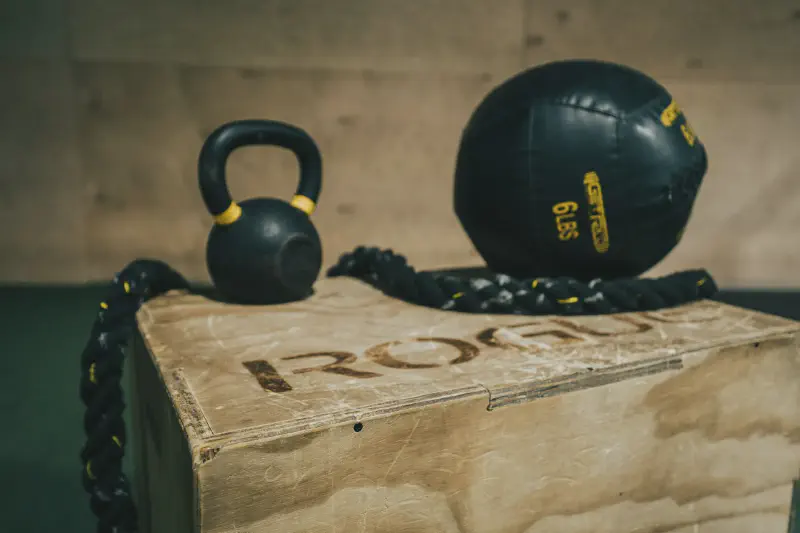Plyometric Exercises to Improve Running Power and Speed: A Comprehensive Guide for Runners
Introduction
For runners seeking to elevate their performance, plyometric exercises emerge as an indispensable tool. Plyometrics, a form of training involving rapid, powerful movements, offers a wealth of benefits for runners, enhancing their running power, speed, and overall athleticism.
Section 1: Understanding Plyometrics
Plyometric exercises can be classified into two primary types: depth jumps and bounding exercises. Depth jumps involve eccentric muscle contractions followed by explosive concentric contractions, while bounding exercises involve repetitive hopping or jumping movements. The principles of plyometric training revolve around maximizing force production and power output through rapid muscle actions.
Section 2: Plyometric Exercises for Running
Lower Body Power:
- Box Jumps: Step onto a box, then jump vertically, reaching maximum height before landing softly.
- Single-Leg Bounds: Hop forward on one leg for a specified distance, focusing on maintaining balance and power.
- Depth Jumps: Jump from a slightly elevated platform, landing with bent knees and immediately jumping back up.
Upper Body Strength:
- Medicine Ball Throws: Stand with feet shoulder-width apart, hold a medicine ball at chest height, and explosively throw it forward.
- Plyometric Push-Ups: Perform a push-up, then explosively push up and clap your hands before returning to the starting position.
- Clapping Push-Ups: Perform a push-up, then explosively push up and clap your hands mid-air before lowering back down.
Core Stability:
- Russian Twists: Sit on the floor with knees bent, hold a medicine ball in front of your chest, and twist your torso from side to side.
- Leg Raises: Lie on your back, lift your legs off the ground and hold them perpendicular to the floor, then slowly lower them back down.
- Plank Jacks: Start in a plank position, then jump your feet apart and back together while maintaining a straight body.
Section 3: Benefits of Plyometric Exercises for Runners
- Improved Running Power and Speed: Plyometrics enhance the ability to generate force quickly, which translates to increased running power and speed.
- Reduced Muscle Imbalances: Plyometric exercises target multiple muscle groups simultaneously, helping to correct muscle imbalances and improve overall running form.
- Enhanced Weight Training Results: Plyometrics complement weight training by improving strength and power output, leading to enhanced results in the gym.
- Increased Functional Strength: Plyometric exercises mimic real-world movements, improving functional strength and agility for everyday activities.
- Injury Prevention: By strengthening muscles and improving coordination, plyometrics can reduce the risk of running-related injuries.
Section 4: How to Implement Plyometrics
- Gradual Progression: Start with low-intensity exercises and gradually increase intensity and volume over time.
- Proper Form and Technique: Focus on maintaining proper form to maximize benefits and minimize risk of injury.
- Frequency and Duration: Incorporate plyometric exercises into your training routine 2-3 times per week, lasting 10-20 minutes.
- Rest and Recovery: Allow for adequate rest and recovery between plyometric sessions to ensure muscle regeneration.
Section 5: Bodyweight and Resistance Plyometric Exercises
Bodyweight Exercises:
- Burpees: Drop into a squat position, jump back into a plank, perform a push-up, jump forward, and jump up with a clap.
- Jump Squats: Squat down, then explosively jump up, reaching maximum height before landing softly.
- Mountain Climbers: Start in a plank position, then bring your right knee towards your chest, then your left knee, alternating rapidly.
Resistance Exercises:
- Weighted Jumps: Hold a dumbbell or kettlebell in each hand and perform box jumps or depth jumps.
- Kettlebell Swings: Stand with feet hip-width apart, hold a kettlebell in front of your body, and swing it up to shoulder height.
- Plyometric Lunges: Step forward into a lunge, then explosively jump up, switching legs in mid-air.
Section 6: Sample Plyometric Workout Plan
Warm-up:
- Jogging or running in place (5 minutes)
- Dynamic stretching (5 minutes)
Plyometric Exercises:
- Box Jumps (3 sets of 8-12 repetitions)
- Single-Leg Bounds (3 sets of 10-15 repetitions per leg)
- Russian Twists (3 sets of 20-30 repetitions)
Cool-down:
- Static stretching (5 minutes)
Conclusion
Plyometric exercises are a powerful tool for runners seeking to enhance their performance. By incorporating them into their training routines, runners can improve their running power, speed, and overall athleticism. Gradual progression, proper form, and adequate rest are essential for maximizing benefits and minimizing risks. Embracing plyometrics is a transformative step towards unlocking your running potential and achieving your fitness goals.
